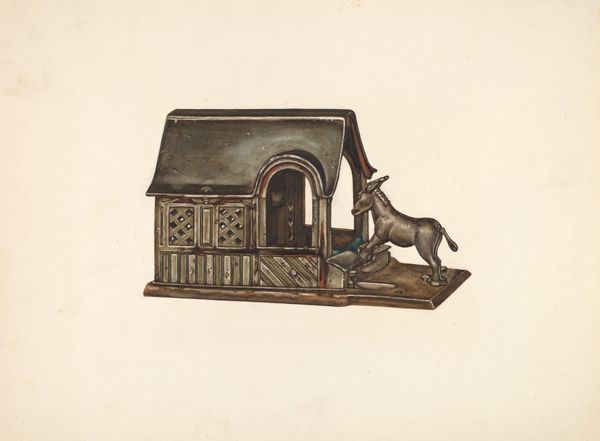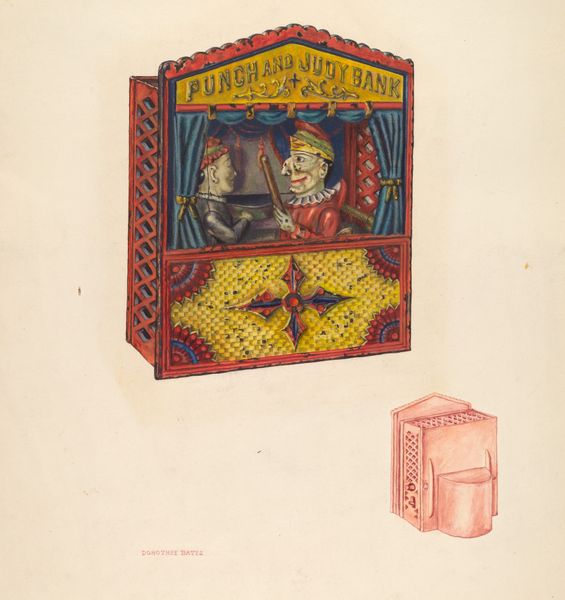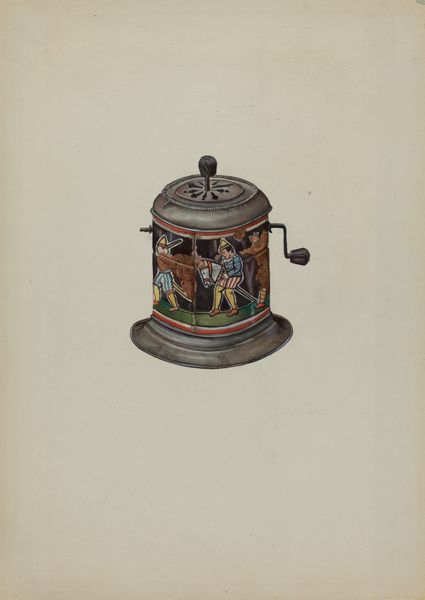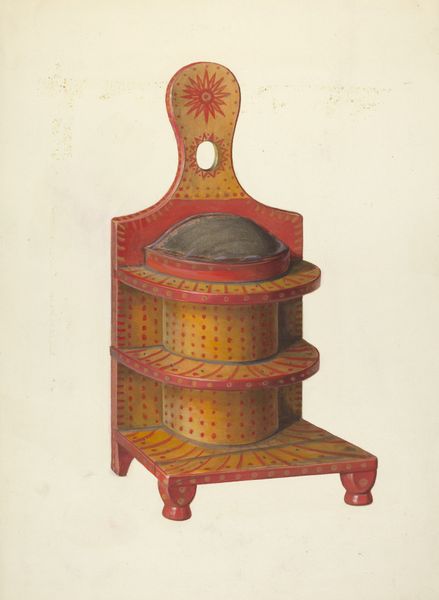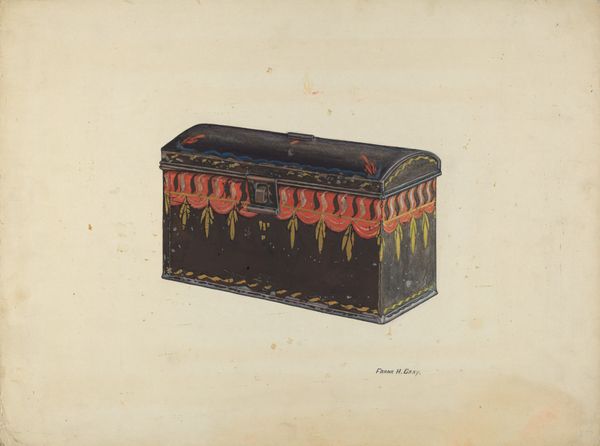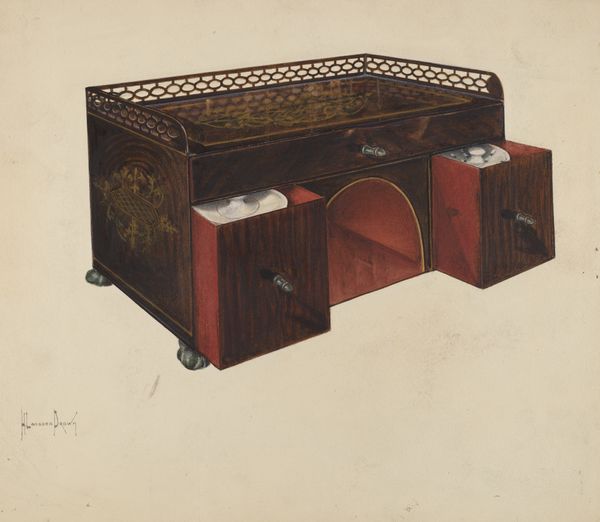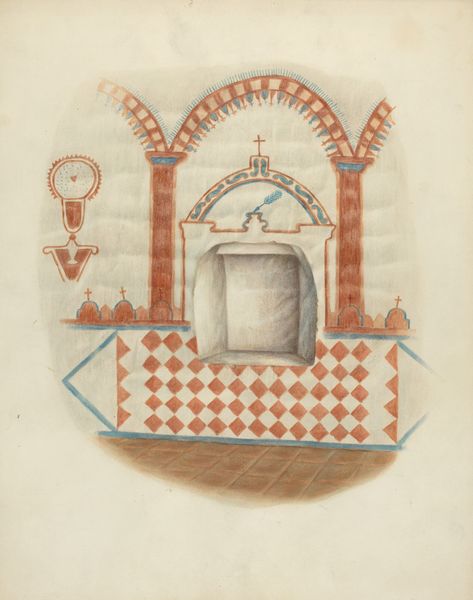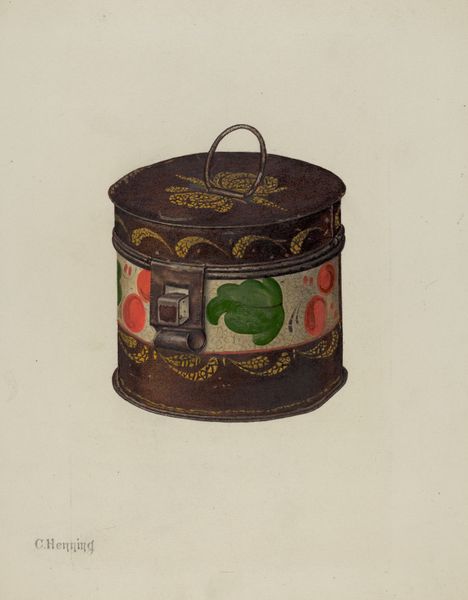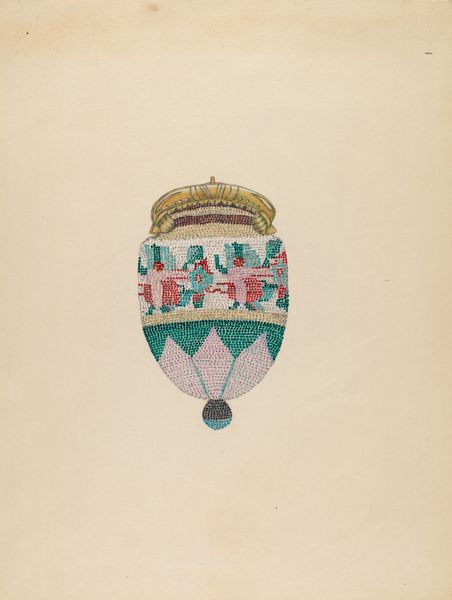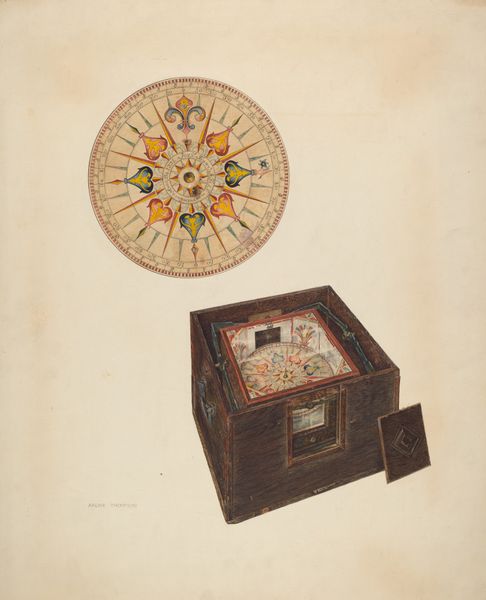
drawing, watercolor, pencil
#
drawing
#
water colours
#
watercolor
#
coloured pencil
#
pencil
#
academic-art
Dimensions: overall: 39 x 48.8 cm (15 3/8 x 19 3/16 in.)
Copyright: National Gallery of Art: CC0 1.0
Editor: This is William Pollman's "Model of a Side-Wheeler," made between 1935 and 1942 with watercolor and colored pencil. I'm struck by the whimsical nature of the drawing – the details are quite intricate, but also a little fantastical. What symbols or hidden meanings do you see here? Curator: The side-wheeler itself is already freighted with cultural memory, isn't it? As an icon, it evokes a specific period in American history, tied to notions of exploration, industrial progress, and a certain romanticism of river life. It’s more than just a boat; it’s a symbol. Editor: A symbol of what, exactly? Curator: Perhaps a bygone era, a more tangible and less complex mode of transportation, or a naive period of mechanical innovation. This representation has this playful naiveté of rendering a three-dimensional object. Does the drawing's lack of proper perspective enhance or detract from that symbolism, do you think? Editor: I think it adds to the dream-like quality. Almost like a child's memory of a steamboat rather than a precise depiction. The green colors also give it an unexpected lightness, like something you’d see in a fantasy. Curator: Precisely! Color, of course, adds to the image’s emotional tenor. Green for vitality but also artificiality, considering a working riverboat’s usual aesthetic. So, the symbols layer; it’s not just the steamboat but *this* steamboat – Pollman’s specific rendering and memory of it. A memory refracted through color and distorted perspective. Editor: That’s a very interesting way of thinking about it, making it personal and universal at the same time. I will remember that. Curator: Wonderful! It also enriches my understanding, too. The layered meaning is a reminder of how much even seemingly simple images can communicate about history, emotion, and memory.
Comments
No comments
Be the first to comment and join the conversation on the ultimate creative platform.

